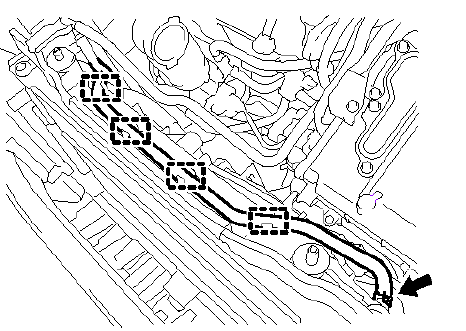Chevrolet Trax: Seat heating and cooling - Description and operation
HEATED SEATS DESCRIPTION AND OPERATION
Heated Seat Components
The driver and passenger heated seats consist of the following components:
- Left heated seat switch
- Right heated seat switch
- HVAC control module
- Seat memory control module or seat heating control module
- Driver seat cushion heating element
- Driver seat back heating element
- Driver seat cushion temperature sensor
- Passenger seat cushion heating element
- Passenger seat back heating element
- Passenger seat cushion temperature sensor
NOTE: The passenger seat block diagram is identical to the driver seat.
Heated Seat Block Diagram

Fig. 6: Heated Seat Block Diagram
.jpg)
Heated Seat Operation
The driver and passenger heated seats are controlled by the seat memory control module/seat heating control module located under the driver seat cushion. Both heated seats are controlled by separate heated seat switches located in the HVAC control module. When a heated seat switch is pressed, a serial data message is sent from the HVAC control module to the seat memory control module/seating heating control module indicating the heated seat command. In response to this signal, the control module applies battery positive voltage through the element supply voltage circuit to the appropriate seat heating elements. The seat memory control module/seating heating control module then sends a serial data message back to the HVAC control module to either illuminate or turn off the appropriate temperature indicator.
Temperature Regulation
When the engine ON, the heated seats will initialize in the OFF state. With each activation of the heated seat switch, the seat memory control module will cycle the temperature setting in the following manner: HIGH, MEDIUM, LOW, and OFF.
The seat memory control module monitors the seat temperature through the temperature sensor signal circuit and the temperature sensor (thermistor) located in the seat cushion with the heater element. The temperature sensor is a variable resistor, its resistance changes as the temperature of the seat changes. When the temperature sensor resistance indicates to the module that the seat has reached the desired temperature, the module opens the ground path of the seat heating elements through the heated seat element control circuit. The seat memory control module will then cycle the element control circuit open and closed in order to maintain the desired temperature.
Load Shed Management
The electrical power management function is designed to monitor the vehicle electrical load and determine when the battery is potentially in a high discharge condition. The heated seat system is one of the vehicle loads that is subject to reduction during a battery discharge condition. For more information on load management refer to Electrical Power Management Description and Operation .

